This client from Heywood reached out for some advice regarding their Victorian tiled floor that needed renovating. It was quite a large hallway and porch that needed attention and having tried cleaning it themselves they realised the tiles contained a lot of ingrained dirt that was proving stubborn to remove.
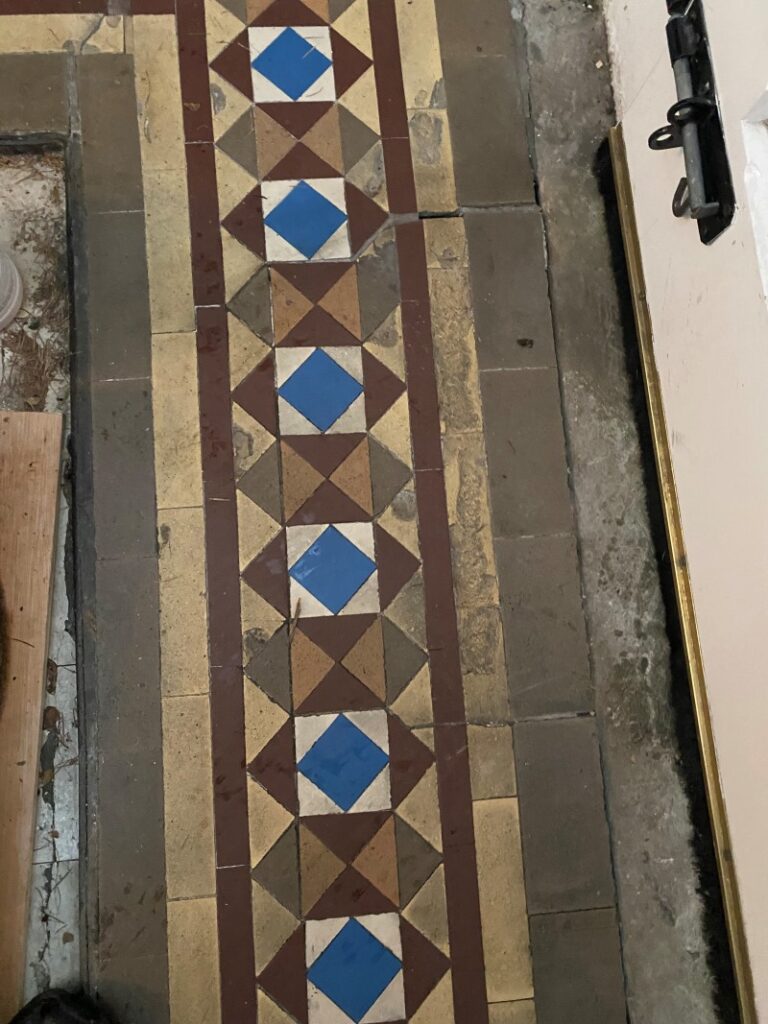
They had uncovered the original Victorian floor under old carpet, and though there was some damage to the perimeter due to carpet fitting and plumbing updates etc it was broadly complete. There was also some work required in the porch due to settlement.
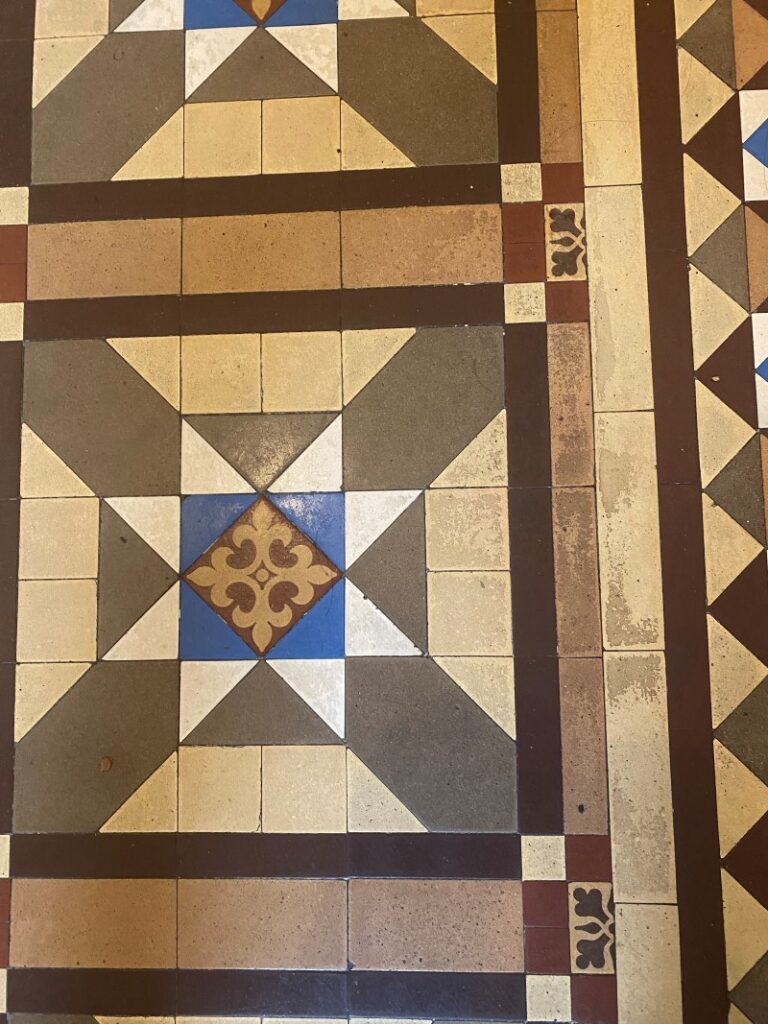
The client had attempted to clean the floor themselves as much as they could but there was ground in dirt and staining from carpet glue and paint which meant it looked permanently unclean. In addition, it was ‘sticky’, and unpleasant to walk on due in part to unstable old sealers.
They needed a quote for someone to clean and seal the tiles properly and leave a serviceable floor that could be maintained easily. For now, repairs were to be left except for replacement of a missing piece and re-fixing a few loose tiles at the foot of the stairs.
Happy with the quote, we agreed a date for the work to start.
Cleaning and Repairing a Victorian Tiled Hallway
The first job was to re-secure the tiles by the stairs and adding the missing piece of tile that I mentioned earlier. This was followed by removing what was left of the sticky old sealer which was done using a strong dilution of Tile Doctor Remove and Go and a 50-grit diamond pad. Coarse pads are ideal for removing the ingrained patterns that carpet can leave on a tile after being covered for many years. The floor was then inspected, and any stubborn areas re-done before extracting the soiling with a wet vacuum.
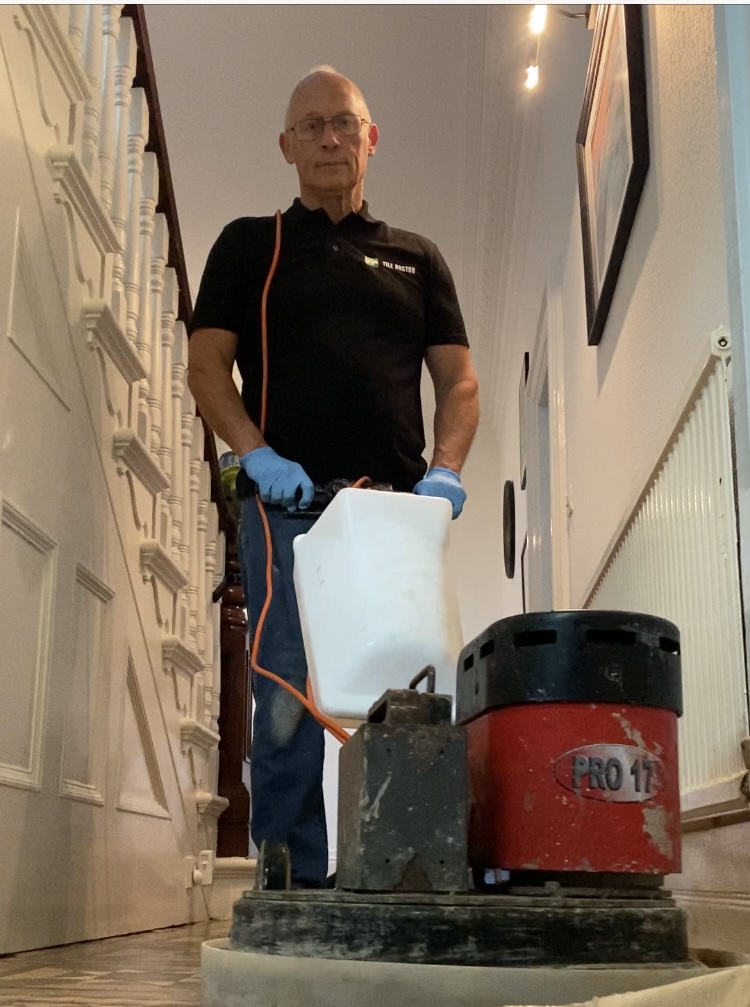
The next job was to clean the floor using a gel cleaner called Tile Doctor Oxy-Gel. Due to the age of the property and the fact there was a cellar below, I wanted to minimise the use of water, this would also help with drying times. The gel was spread onto the floor with a little water and then scrubbed into the tiles using a 100-grit diamond pad. Once the whole floor was cleaned in this manner the soiling was extracted as before with the wet vacuum.
The last step in the cleaning process was to treat the floor to an acid wash using Tile Doctor Acid-Gel. This is another specialist Tile Doctor gel-based product that has several benefits including the further cleaning of the tiles, neutralising the PH level of the floor and countering salts which are quite common with old floors.
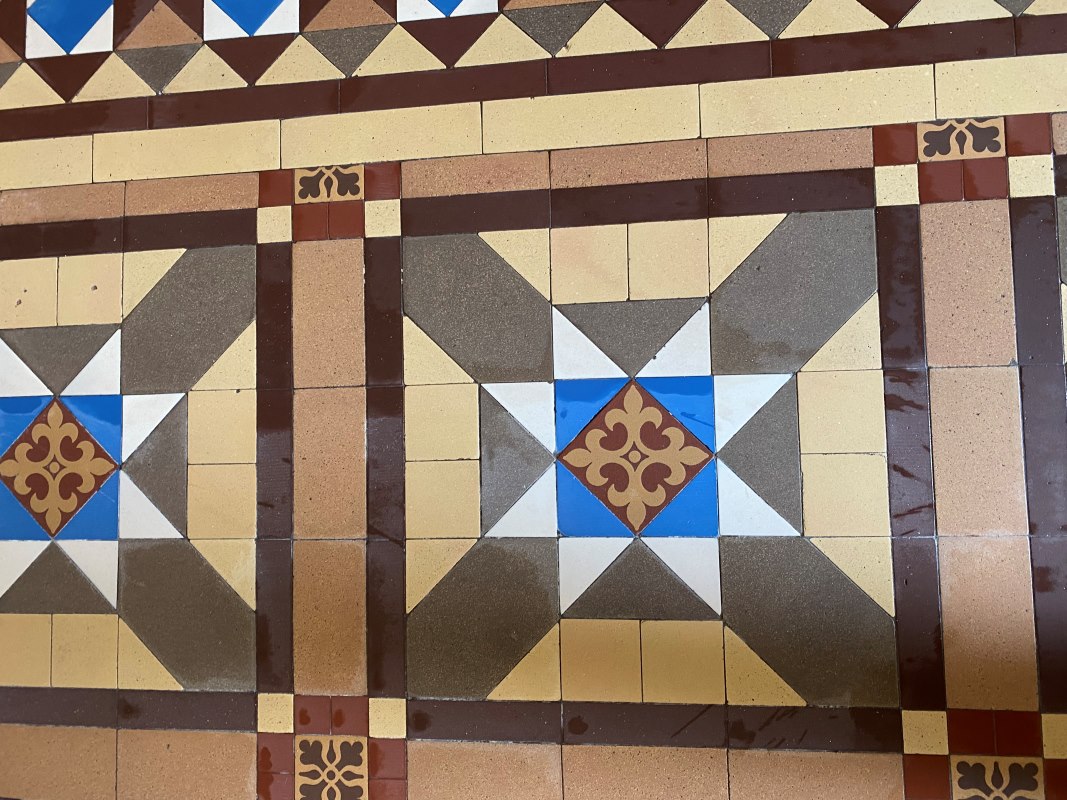
The floor was now free of ingrained dirt and staining and after a final rinse and extraction with the wet vacuum the floor was left to dry off overnight.
Sealing a Victorian Tiled Hallway
I returned the next day to seal the tiles and started by taking moisture readings from the tiles using a damp meter. This confirmed the floor was dry and ready for sealing.
I was then able to move onto sealing the floor using Tile Doctor X-Tra seal which is a long-lasting oil-based impregnating sealer that improves colour in the tile and is fully breathable, an important consideration when sealing an old floor that was previously covered in carpet. This product is also rated for external as well as internal use so its ideal for hallways which can get wet.
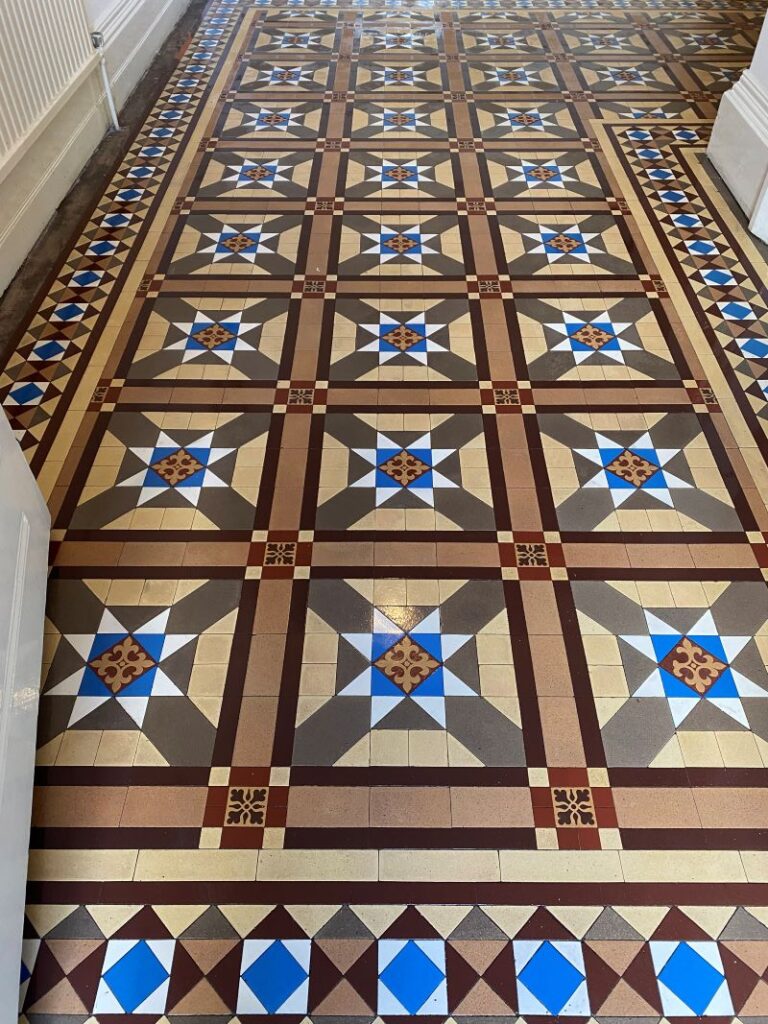
Once complete the floor looked new again, much to the delight of my clients who were very happy with the work and left the following comment on our feedback system:
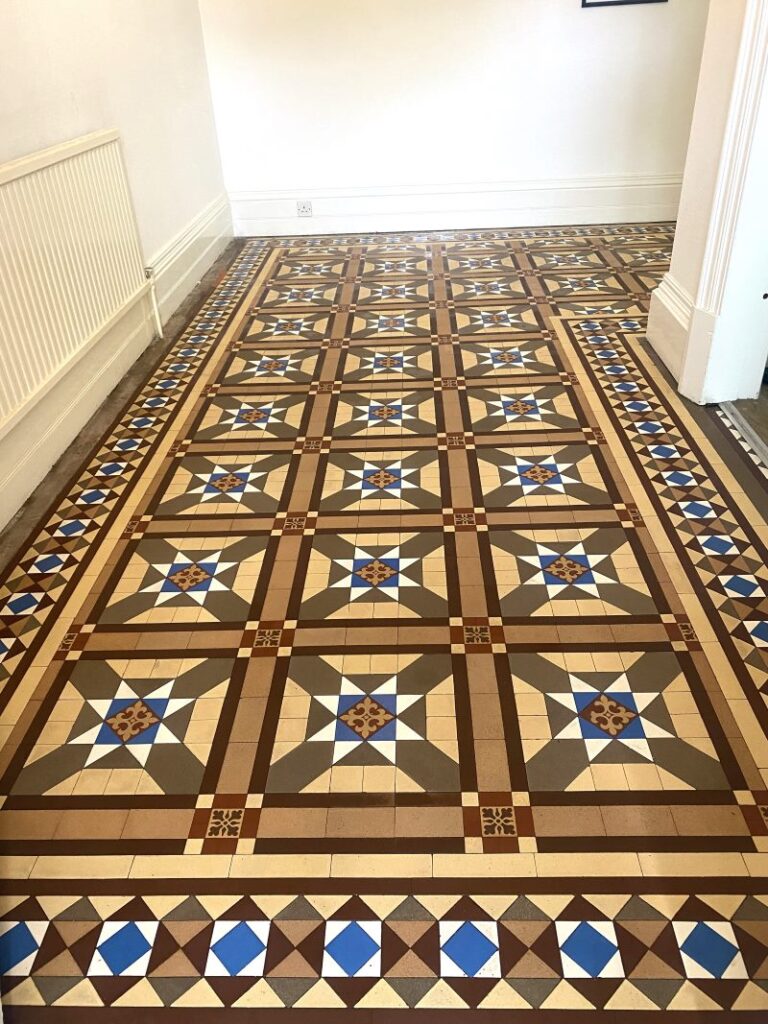
Before leaving I took time to discuss aftercare for which I recommended they use Tile Doctor Neutral Tile Cleaner, being pH neutral its ideal for the regular cleaning of sealed tiles. Many of the tile cleaning products you find in supermarkets are very strong and will strip the sealer off a floor so always read the label.
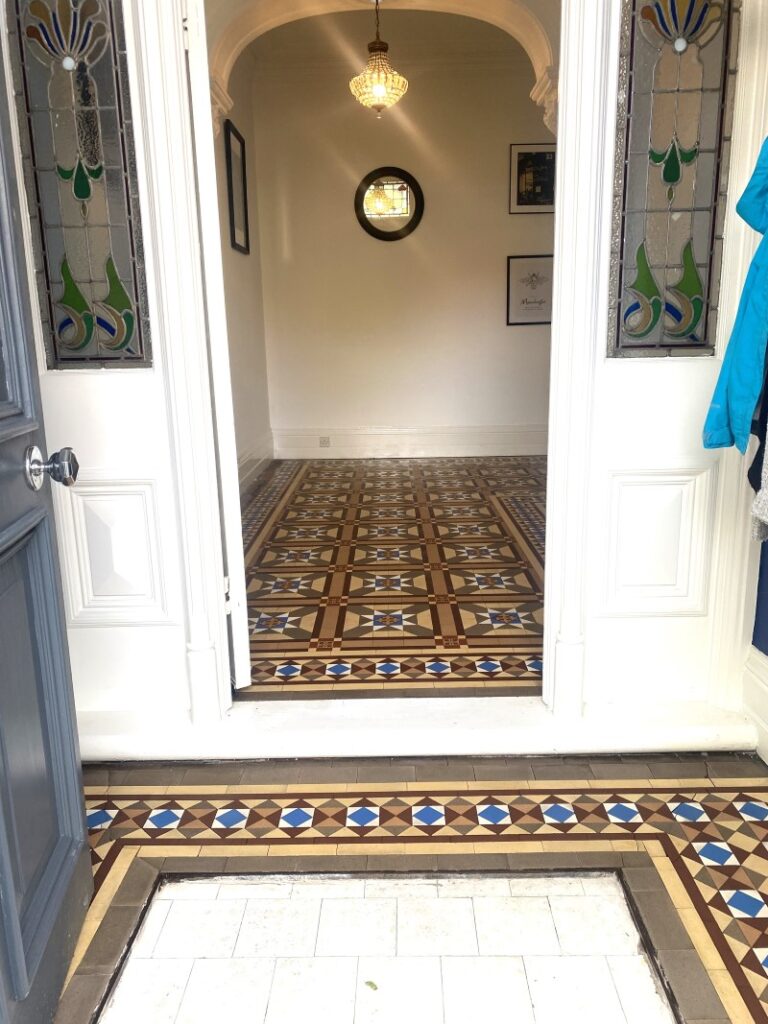

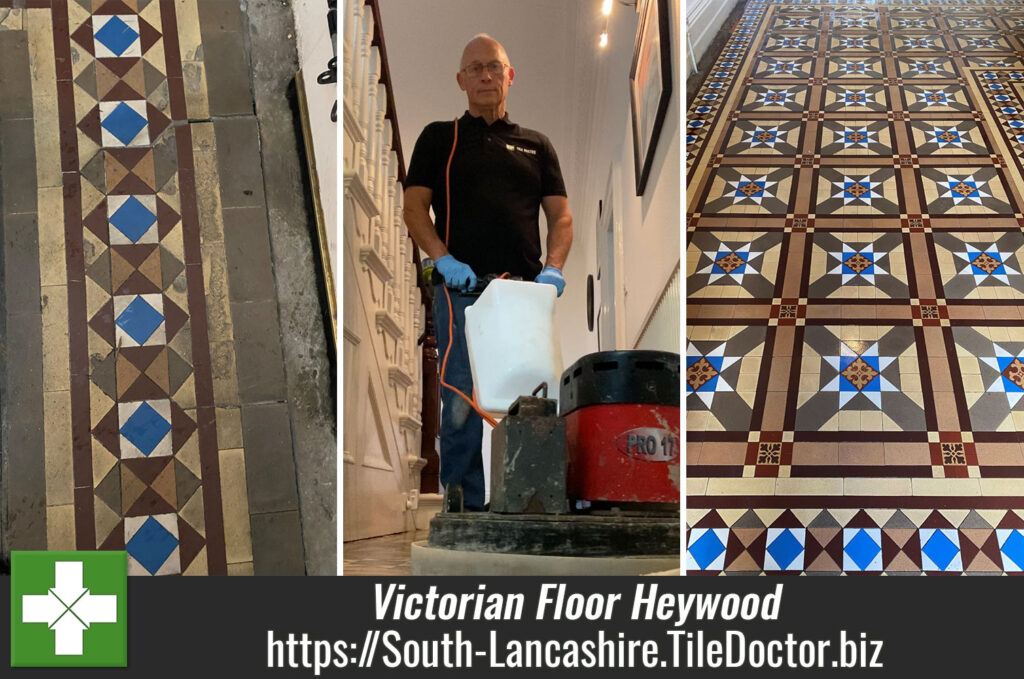
When cleaning tiles with a mop we recommend using two buckets, one containing a neutral pH cleaning fluid such as Tile Doctor Neutral Tile Cleaner or Stone Soap and the second where you rinse your mop afterwards, otherwise you will contaminate your cleaning fluid with dirt every time you rinse.